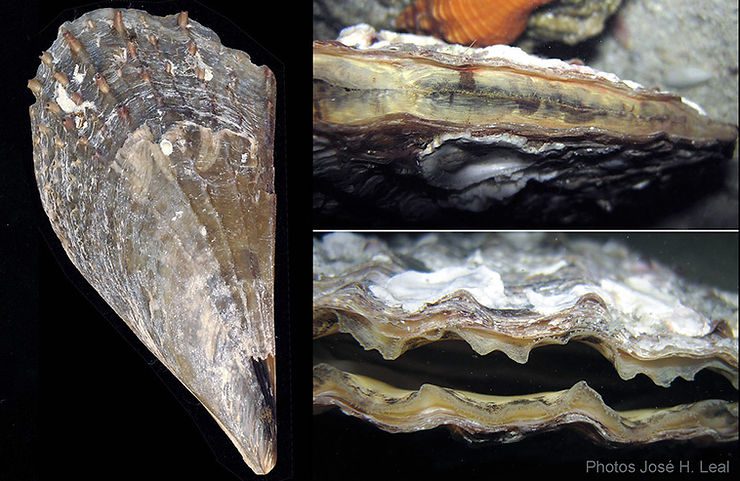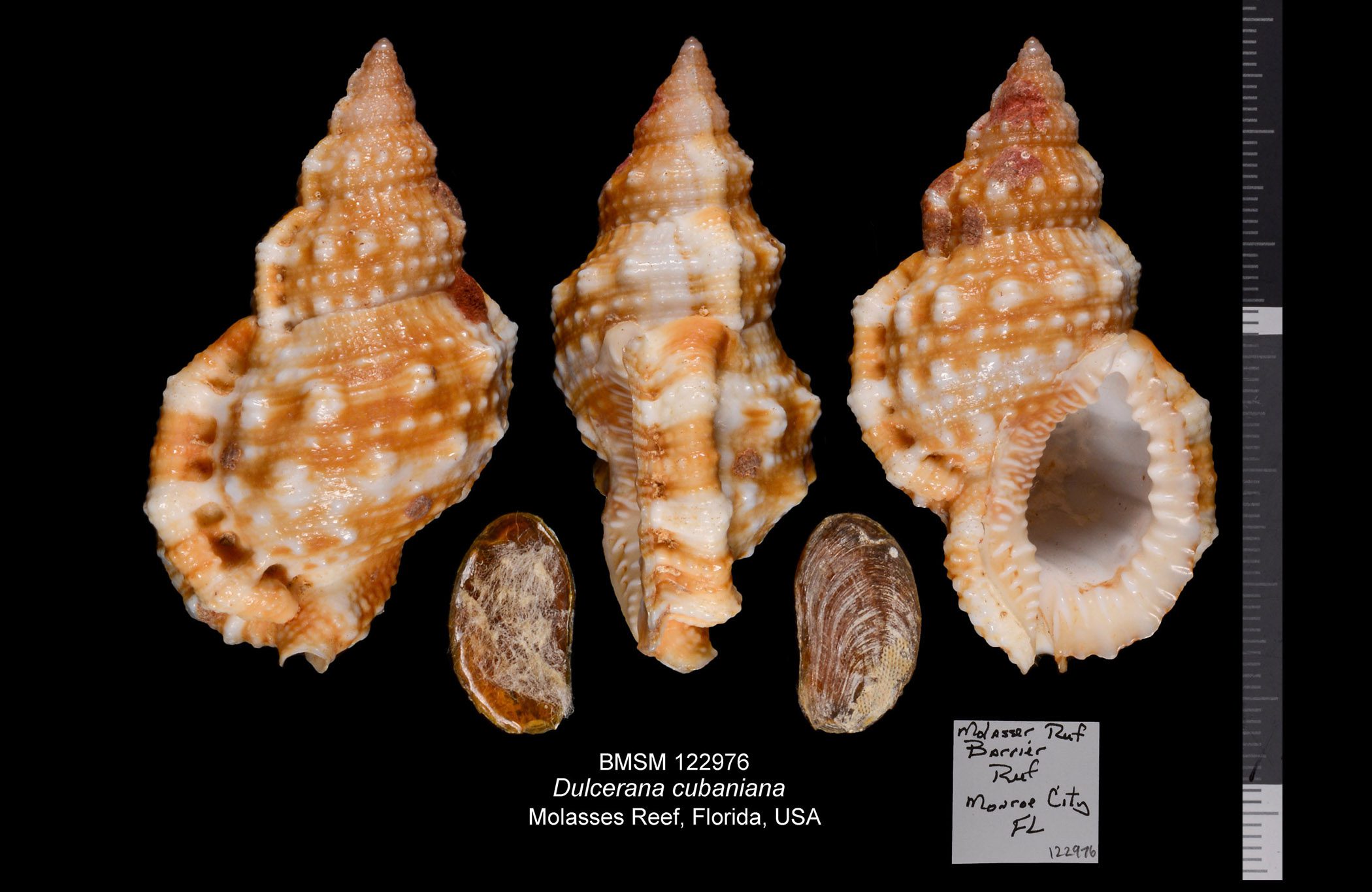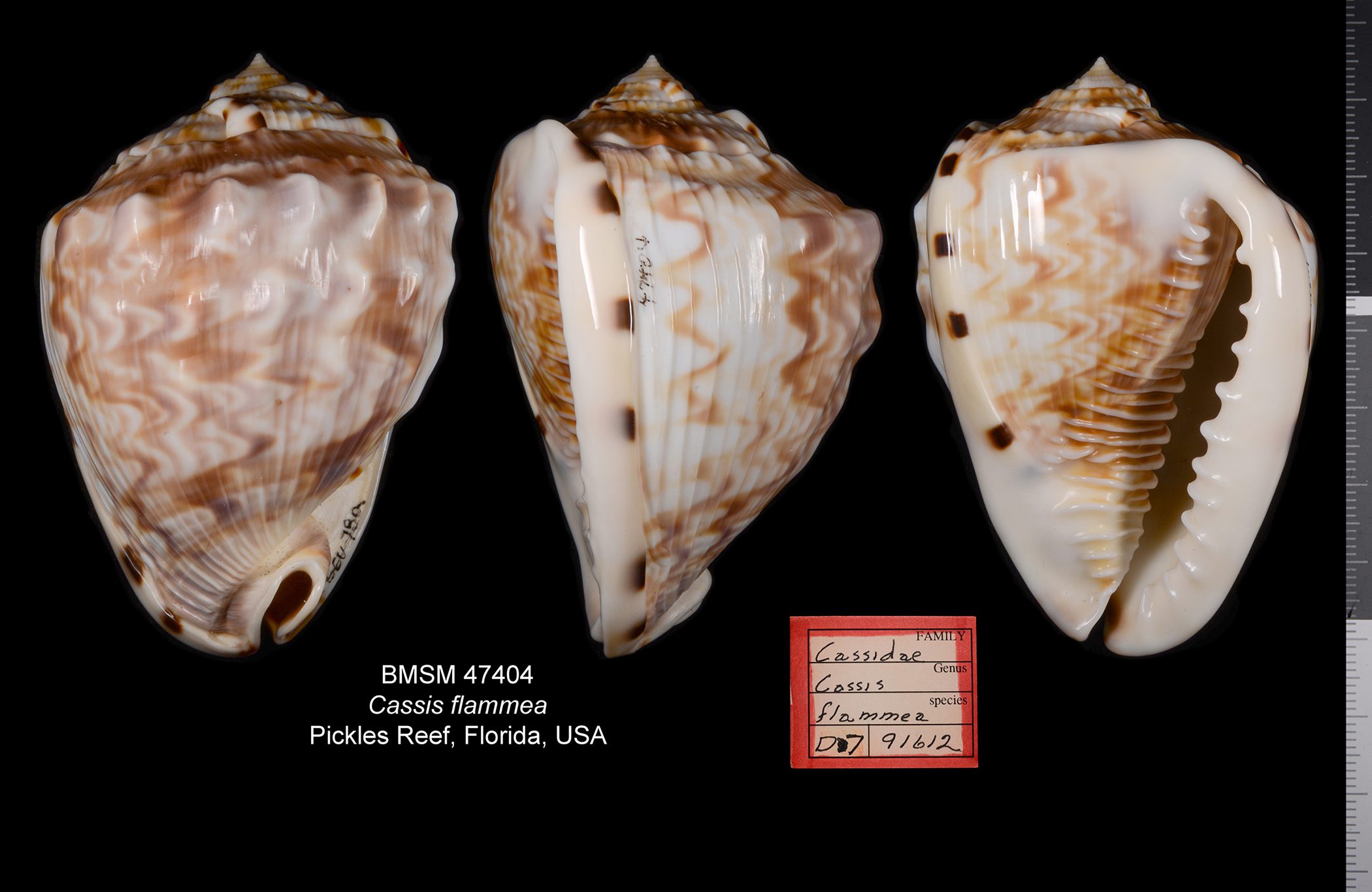Pen shells anchor themselves to the sandy bottom using a bundle of silky fibers called a byssus. The bivalve is buried with the shorter side of its triangular shell oriented upward, the pointy end down. Although no common, the Half-naked Pen Shell in the images below, Atrina seminuda, may be found on the beaches of Southwest Florida during winter months, when storm waves pull the living bivalves from the bottom.
The photos on the right show a living Half-naked Pen Shell viewed from above. The image on bottom right shows the bivalve’s mantle cavity completely open, and the one on top right illustrates how the animal is able join both sides of the mantle edge to help regulate or stop the incoming flow of water, in a process akin to a natural “zipper”. Read more about mollusks and their shells in the Museum’s Shell Guide and Blog.
 Stiff Half-naked Pen Shell, Atrina seminuda, shell (left) and living animal (right.) Photos by José H. Leal.
Stiff Half-naked Pen Shell, Atrina seminuda, shell (left) and living animal (right.) Photos by José H. Leal.


